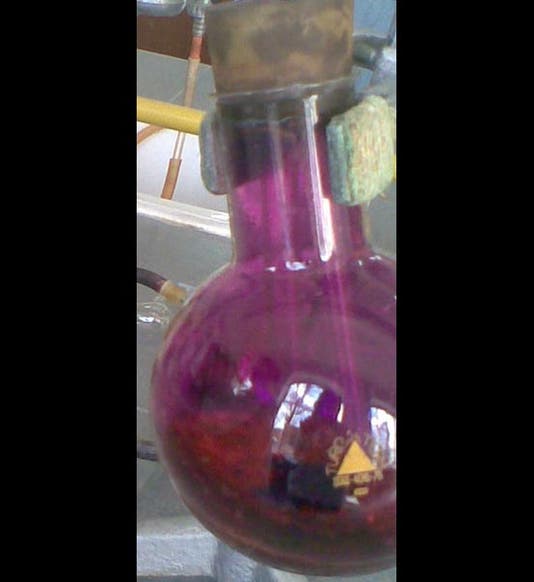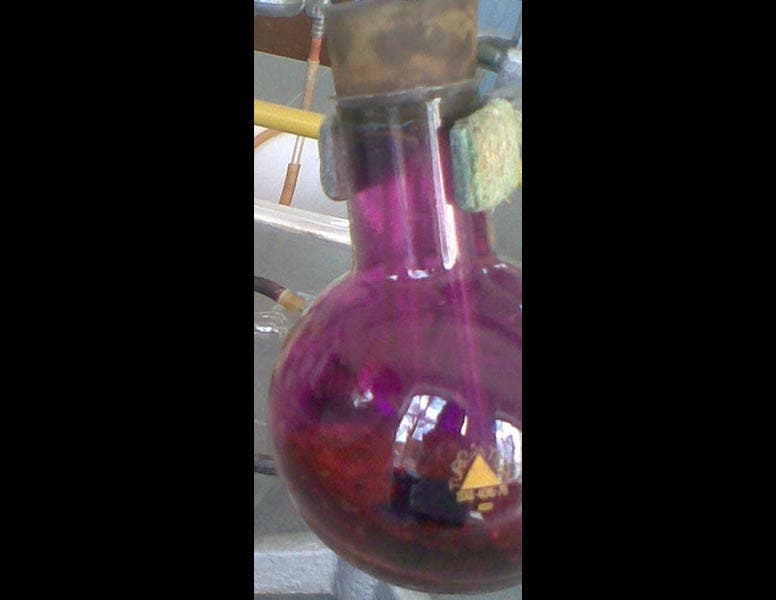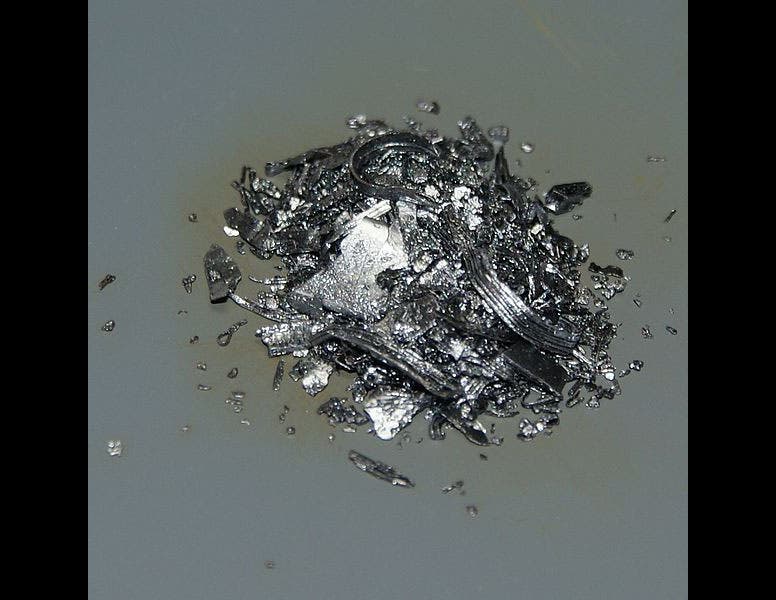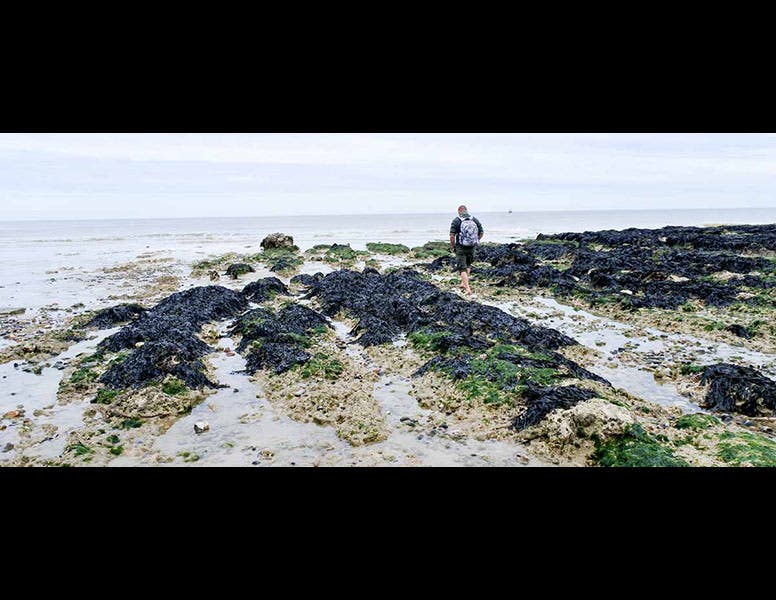Scientist of the Day - Bernard Courtois
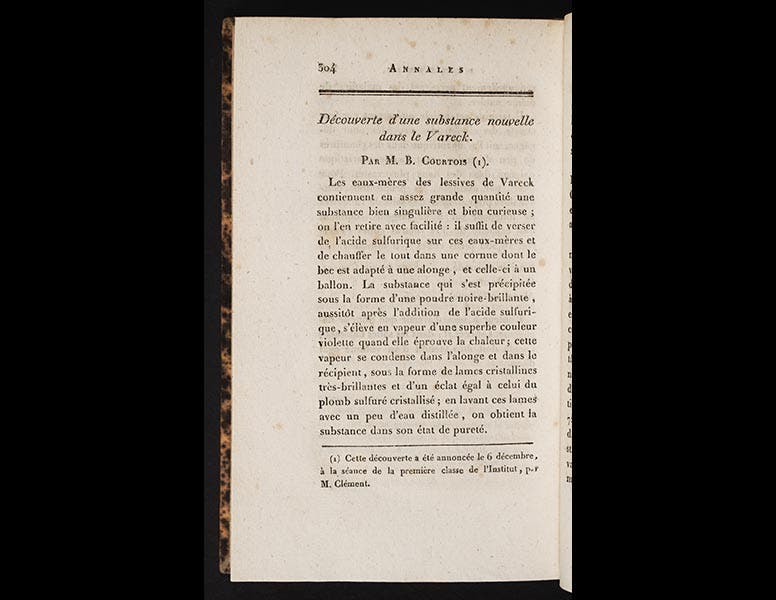
Linda Hall Library
Bernard Courtois, a French chemist, was born Feb. 8, 1777. In 1811, the French government was looking for alternate ways to manufacture saltpeter, or potassium nitrate, an ingredient essential for gunpowder. Saltpeter had traditionally been made using wood ash, but France (like England) was running out of wood, and other sources were desperately needed. So Courtois, a professional salpêtrier, was working on extracting potassium nitrate from seaweed, which one can find in great abundance along the coast of Normandy. Courtois began to suspect that there was something else in seaweed ash besides sodium and potassium, something corrosive, because the copper vats in his lab were being attacked by some chemical. He found that when he added sulfuric acid to the ash residue, a purple vapor was given off, which then formed deposits of shiny purplish-black crystals on the sides of the vats. Courtois had discovered iodine. He announced the discovery in the journal Annales de Chimie in 1813 (fourth image).
Iodine was first isolated in that same year by Humphrey Davy in England and Joseph-Louis Gay-Lussac of France, and they fought mightily over which of the two identified the element first. But both men, surprisingly gracious in the heat of the priority battle, gave credit to Courtois for the initial discovery. It is usually said that Gay-Lussac coined the word “iodine”, which means purple in Greek, and perhaps he did, but the word “iode” (French for iodine) is used by Courtois on the second page of his paper as a label for his discovery.
Interestingly, just 7 years after Courtois’s announcement, a physician in Switzerland, Jean-Francois Coindet, discovered that doses of iodine can shrink goiters, indicating that goiter is an iodine-deficiency disease, which indeed it is. Rarely, at least before the 20th century, has a chemical discovery had such an immediate impact on medical practice. Courtois and Coindet jointly received a major award in 1831 from the French Academy of Sciences for their beneficial contributions to medicine.
There are no known portraits of Courtois. The photographs that one sees on various websites that discuss the discovery of iodine are of some other poor soul; we know that because Courtois died in 1838, one year before Louis Daguerre invented the photograph. So instead of showing you a picture of Courtois salpêtrier, we offer instead images of iodine vapor, iodine crystals, and seaweed on the seashore at Normandy. The French word for washed-up seaweed is "vareck”, which is why Courtois’s paper is titled: “Decouverte d'une substance nouvelle dans le vareck.”
Dr. William B. Ashworth, Jr., Consultant for the History of Science, Linda Hall Library and Associate Professor, Department of History, University of Missouri-Kansas City. Comments or corrections are welcome; please direct to ashworthw@umkc.edu.

